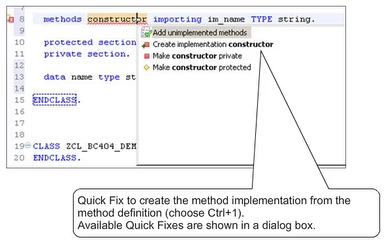Developing ABAP Programs with Eclipse-Based Tools
ABAP Development Tools
ABAP Development Tools (ADT) is an alternative to the ABAP Workbench. ADT provides the following features:
- An ABAP development experience on top of the Eclipse platform.
- An open platform for developing new ABAP-related tools.
- A set of open, language-independent, and platform-independent APIs that developers can use to build new custom tools for the ABAP environment.
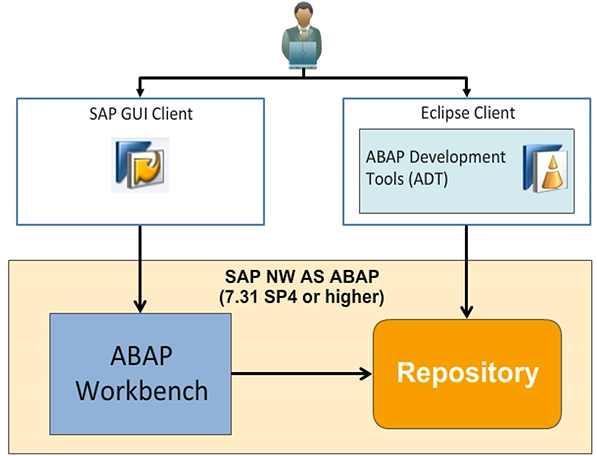
The ABAP Perspective
Eclipse allows development in many different programming languages. To support different types of development, Eclipse contains different combinations of tools, called Perspectives. If you have ADT installed, you can switch to the ABAP perspective. Choose Window → Open Perspective → Other... → ABAP in the menu bar or choose the Open Perspective button.
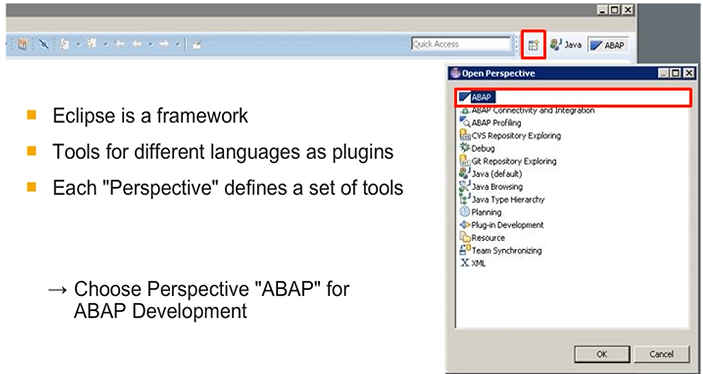
Creation of an ABAP Project
When you use ADT, you log on to an SAP back-end system and work directly with its repository objects. Therefore, the development process is exactly the same as when you use the ABAP Workbench — there is no check-out and check-in of the objects.
An ABAP project serves as a container for the development objects that are stored in a particular ABAP back-end system, and contains the logon parameters for the system logon — System, Client, User, and language. You must be logged on to the system to edit an object. Within the ABAP project, you can access any development object in the repository. In addition, to make it easier to manage objects you can set up favorite packages for each project.
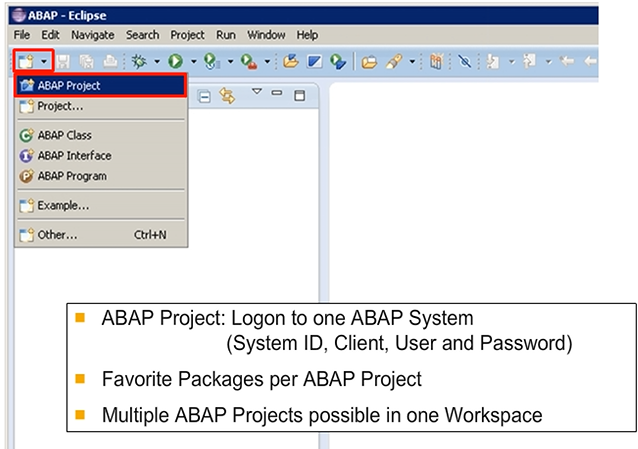
Object Editing
The Project Explorer provides a hierarchical view of the repository, similar to the navigation area of the ABAP workbench. Under each project, you can maintain a list of favorite packages. By expanding the node System Library, you see a list of all packages.
To open a specific repository object in its respective editor, double-click it. The editor is shown on the right side of the ABAP perspective. For each new object, a new tab is added. This simplifies the navigation between editors and objects.
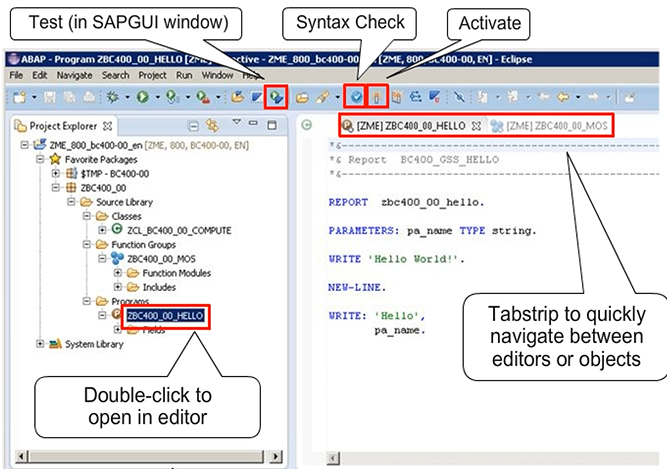
Types of Editors
There are two kinds of editors in ADT – there is a native Eclipse implementation and an SAP GUI based implementation. In the figure, you can see an example of each of the following types:
- The Eclipse Editor as an example of an ABAP editor.
- The Integrated SAP GUI Editor or ABAP transaction editor shows how the classic SAP GUI visualization appears within the Eclipse environment.
There is no requirement to use ADT for ABAP Development, and each developer is free to choose whether to use ADT or the classic ABAP Workbench. The functions and features of Eclipse and ADT lend themselves particularly well to object-oriented programming, among these features are various built-in refactoring functions and support for unit testing. There are other tasks to which the ABAP Workbench is better suited — in particular working with module pools and screens.

Quick Fixes
In Eclipse, Quick Fixes are shortcuts to complete tasks or resolve errors that are proposed automatically by the editor. The class editor in ADT provides quick fixes for common editor tasks.
The key combination CTRL + 1 shows you available quick fixes in a dialog box. In a class, these are as follows:
- Add the implementation of a declared method.
- Add all method implementations that are still missing (for example, all methods of an interface).
- Move a method to a different visibility section within the class.
